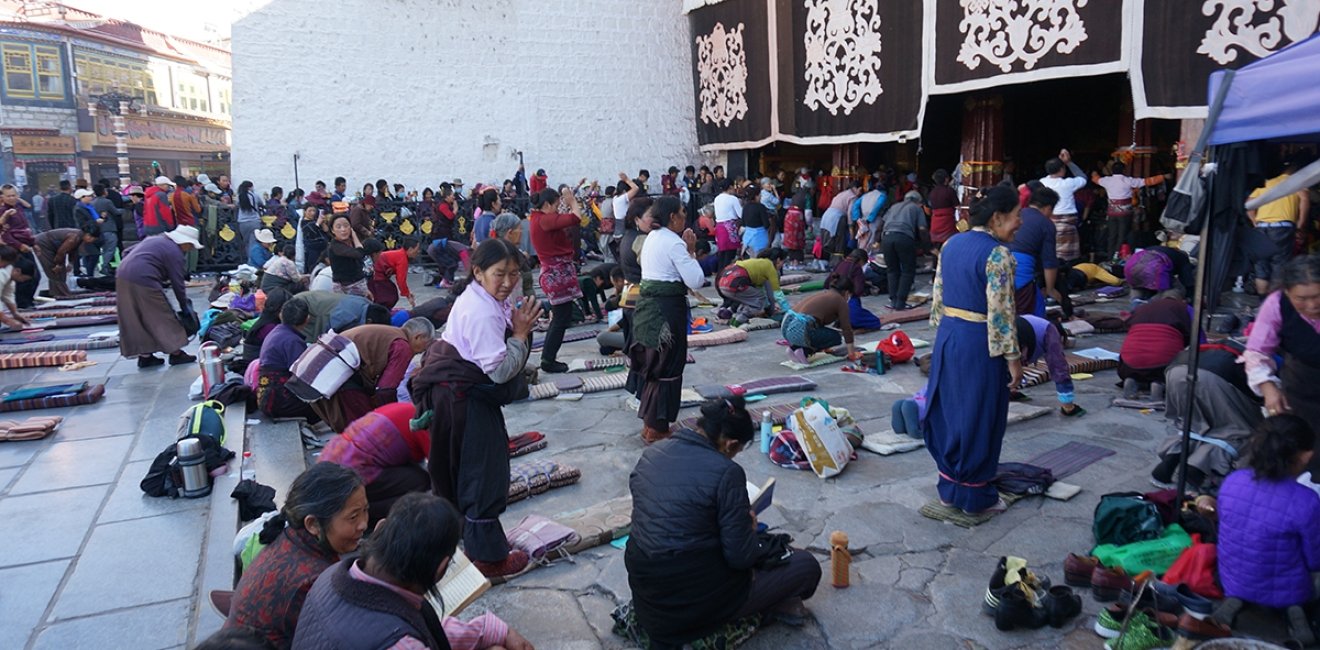
A blog of the Wilson Center

If things continue at their current pace, Chinese authorities will have forcibly uprooted and relocated approximately 500 Tibetan villages (including more than 550,000 individuals) by the end of 2025.
The United Nations Refugee Agency has estimated that by the end of this year, there could be as many as 130 million people displaced across the world. That includes a third of Ukrainians who have been forcibly displaced from their homes since Vladimir Putin’s full-scale invasion in early 2022, more than a fourth of Sudanese who have been forcibly displaced since war broke out again earlier this year, and over a fourth of Venezuelans who have been forced from their homes since 2015. And then there are the ongoing displacement crises in places like Syria and the Democratic Republic of Congo.
In other words, there are numerous forced displacement crises going on right now around the world. That inevitably means that some simply aren’t getting the attention—or support—they deserve.
Many Americans have heard about China’s systematic oppression of Uyghur Muslims from the northwest Xinjiang province. Between 2017 and 2019, somewhere between 800,000 to 2 million Uyghurs and other Muslims were arbitrarily detained in “reeducation” camps. Uyghurs in the region were also subjected to forced labor, sterilization, and surveillance (all considered to be crimes against humanity), and even genocide, according to the US, UN, and others in the international community. Although China closed many of these camps in 2019, hundreds of suspected camps remain in use. Others have been repurposed into formal prisons that continue to disproportionately detain Uyghurs.
While Western news services still carry the occasional story about the plight of the Uyghurs, another Beijing-led campaign against an ethnic minority group persists without much attention: the Chinese government’s decades-old effort to destroy the independence and distinctiveness of Tibetans.
China has long held that Tibet is legally (and practically) an integral part of the People’s Republic of China and, therefore, under the control of the Chinese Communist Party (CCP), despite active Tibetan resistance. While China’s constitution recognizes citizens’ “freedom of religious belief,” the CCP continues to heavily restrict religious practice, forcing the Dalai Lama—the spiritual leader of Tibetan Buddhists, who compose over 90% of Tibet’s population—into exile since China’s military occupation of Tibet in 1959.
What is less well known to many Westerners is Beijing’s practice of “whole-village relocations” and its broader efforts to “Sinicize” Tibetans and their religion by uprooting and replacing local culture. The CCP has advanced efforts to dilute the Tibetan ethnic majority with an influx of state-sponsored Han Chinese migrants and forcibly placing Tibetan children into Chinese schools. According to a recent report by Human Rights Watch (HRW), Beijing began the process of forcibly relocating 930,000 rural Tibetans in 2020, while pressuring another 3.36 million to change their way of life. Just as Beijing has framed its detention of Uyghurs as voluntary participation in “vocational education and training centers,” the CCP has argued that the relocation of Tibetans is both economically beneficial and undertaken willingly by Tibetans. However, the HRW report documented systematic efforts to intimidate individuals into relocation through coercive home visits by CCP authorities and threats to cut off services. In fact, HRW said it was unable to find a single example of an individual Tibetan being permitted to voluntarily stay put.
According to HRW analysis of previous Tibetan relocation programs, once people have left their home villages, Chinese law essentially guarantees that they won’t be able to return. And upon their move, Chinese authorities demolish the relocated Tibetans’ original homes.
The relocation of Tibetan families is part of a larger effort by the CCP to fully assert regional control. Given the extensive cultural influence which the Dalai Lama holds over this population and his advanced age, Beijing is preparing to select its own Chinese successor once he passes—against Tibetan Buddhist custom and the current Dalai Lama’s wishes. The United State has made its support for the aspirations of the Tibetan people clear. For example, the Resolve Tibet Act explicitly recognizes and reaffirms the distinctness of Tibet’s culture and history and insists that the next Dalai Lama is to be chosen solely by the Tibetan people.
Given the many crises that seem to be raging these days, it’s hardly surprising that that of the Tibetans, which is shielded from public view by an authoritarian regime, has fallen off the front pages. That doesn’t make it or others that fade from view any less important, or tragic. Just ask those who once lived peacefully in the villages of Tibet.
This blog was researched and drafted with assistance from Bella Wexler.
Author

Explore More in Stubborn Things
Browse Stubborn Things
Spying on Poachers

China and the Chocolate Factory

India: Economic Growth, Environmental Realities
